There are over 50 species of dogwood – part of the Cornus plant family – that are native to North America, Europe, Asia and Africa. There is much diversity within this genus, ranging from medium-sized native specimens, such as the flowering dogwood, Cornus florida, to the small, shrinking bunchberry dogwood, Cornus canadensis, that grows as a ground cover in forests across Canada and the United States.
As fall takes hold, dogwoods put on a spectacular seasonal display, with orange, red, brown, or yellow leaves marking the end of the growing season. Despite cooler weather and darker days of October and November, there is still much to be done in the yard and spending a little time to tend to your dogwood will help to keep them in good health and encourage them to return better than ever next year.
So, if you grow native dogwood trees in your borders or a container, our fall care guide has all the information you need to know, including pruning advice from a plant expert from the Knoxville Botanic Garden and Arboretum in East Tennessee.
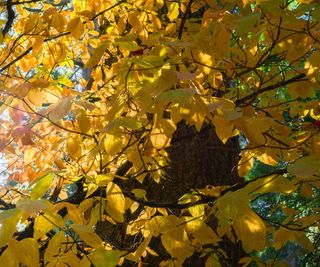
(Image credit: Getty Images/Sundry Photography)
What to do with dogwoods in the fall
In October, November and December, there is plenty of sowing, weeding and tidying to do in the yard as part of your fall gardening checklist. While the climate will vary depending on where you live and your US hardiness zone, the weather is typically mild and wet at this time of year. While your plants and shrubs are no longer actively growing, fall is the ideal time to prepare them for colder months ahead and spending a small amount of time mulching, tidying and watering your shrubs will pay off next year.
1. Mulching dogwoods in the fall
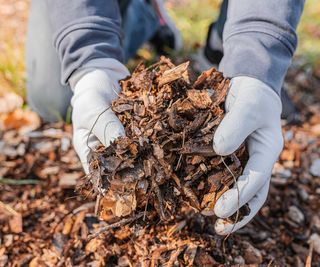
(Image credit: Larisa Stefanuyk / iStock / Getty Images Plus / Getty Images)
Whether you have one large statement tree in your backyard or you are growing flowering dogwood trees in pots, one key task to complete in the fall is mulching. Applying a thick layer of mulch around your dogwood tree in the fall can help protect the roots from frost and snow, while also adding nutrients and feeding the soil.
Choose a good quality mulch, like this pine bark mulch, available to order from Amazon, spreading a two to four-inch layer around the base of your shrub or tree, being careful not to let it touch the trunk, as this can invite disease and infection.
If your dogwood is grown in a pot, you can scrape and loosen the top one inch of soil, refilling to the right level with some mulch. This should help to replenish nutrients in the pot as well as provide some insulation during fall and winter.
If you grow bunchberry dogwood as a ground cover plant, this low-growing, deciduous species will soon disappear for the colder months of the year. You can simply apply a good one to two-inch layer of mulch in the areas where bunchberry dogwood plants are growing.
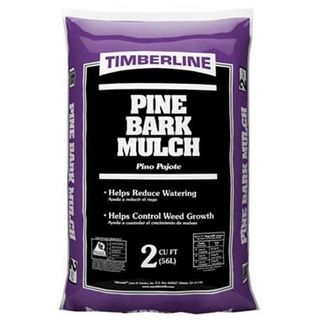
This natural pine bark mulch will help your dogwood shrubs and trees to thrive, feeding the soil while protecting roots during the winter months.
2. Keep watering shrubs and trees in the fall
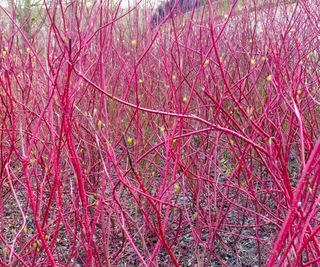
(Image credit: Massimiliano Finzi via Getty Images)
During fall, dogwoods can benefit from the occasional deep watering as they prepare for winter dormancy. This is especially important if fall is dry, with little or no rainfall.
In terms of watering and dogwood care, it is a good idea to saturate the soil every other week if there is little rain in October or November. Watering is less important as winter approaches, but providing your shrubs with adequate water before the ground freezes will ensure that they have ample moisture to draw on until the spring.
Watering is important when growing dogwood trees in pots, but be sure that your pots are not overly wet or waterlogged. Give your pots a full watering can or two if the weather remains mild, being sure that the water drains freely at the bottom of the pot. Once the temperature begins to drop, watering must stop until the spring.
3. Tidy, but do not hard prune dogwoods until winter
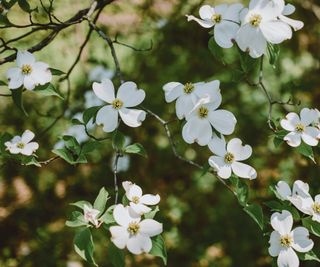
(Image credit: Getty Images/Grace Cary)
Dogwoods do not generally need annual pruning, as many species only tend to grow one or two feet per year. Any pruning is generally best done in late winter, around February or March, so if you are wondering when to prune dogwood trees, this is best thought of as a job to add to your winter gardening checklist.
‘In terms of timing, dogwoods are best pruned in what we call the off-season – winter or early spring, after all the foliage has dropped but before any spring growth emerges,’ says Travis Wilson, Senior Horticulturist at the Knoxville Botanic Garden and Arboretum in East Tennessee.
‘Pruning is an act of wounding – necessary for future health – and the tree or shrub we prune will need time to heal. That healing is best facilitated when it has little else to direct its energy toward, and when little else is active bacterially or virally in the environment around it. That time is, for all intents and purposes, winter and early spring.’
The only pruning you might need to do in the fall is trimming any branches that are dead, diseased, or damaged. There can often be strong winds and storm-like weather in November and December, for example, so you may need to cut a broken branch to prevent further damage.
Use a pruning saw, available from Walmart, to cut down to a joint, which can be removed and added to a log pile or thinner stems can be added to your compost heap.
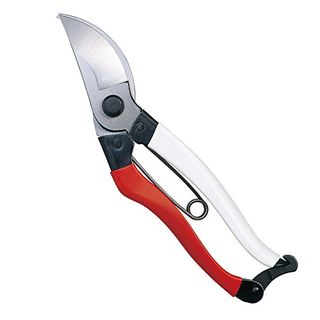
With a smart design, these red and white pruning shears will be easy to find if you put them down in the yard.

Travis Wilson is a plant expert and Senior Horticulturist at the Knoxville Botanic Garden and Arboretum in East Tennessee.
FAQs
Should I fertilize dogwoods in the fall?
No, there is no need to fertilize dogwoods in the fall. Fertilizing late in the year can cause more harm than good by encouraging your shrubs and trees to produce new growth that will not survive the winter weather. Put the fertilizer back in the garden shed until the growing season begins again in spring.
Most dogwood trees are remarkably hardy, with many species growing just fine down to US hardiness zone 5, tolerating the harsh, frozen winter months without any need for winterizing or protection. However, keep an eye on any young saplings that have been planted in the fall. If a cold blast is expected, providing some cover or protection can be a good idea.
If you are looking for more inspiration or advice for October, November and December, see our guide on how to kill weeds in the fall. Spending some time tackling problem plants now will pay off next year.
The genus Cornus consists of over 50 species of dogwood that are native to North America, Europe, Asia, and Africa. From the medium-sized flowering dogwood, Cornus florida, to the small bunchberry dogwood, Cornus canadensis, there is a wide range of diversity within this plant family.
As the fall season arrives, dogwoods exhibit a stunning display of colors with their orange, red, brown, or yellow leaves marking the end of the growing season. Despite the cooler temperatures and shorter days, taking care of your dogwood trees during this time will ensure their health and vitality for the following year.
If you have native dogwood trees in your garden or containers, our fall care guide provides all the essential information you need, including expert advice on pruning from the Knoxville Botanic Garden and Arboretum in East Tennessee.
In the months of October, November, and December, it is important to engage in tasks such as sowing, weeding, and tidying up your yard as part of your fall gardening checklist. While the weather may vary depending on your location and hardiness zone, it is generally mild and wet during this time. Preparing your plants and shrubs for the colder months ahead by mulching, tidying, and watering them will benefit their growth in the coming year.
- Mulching dogwoods in the fall: Applying a thick layer of mulch around your dogwood tree during fall helps protect the roots from frost and snow, while also providing nutrients to the soil. Mulching is crucial for both trees in the ground and those in pots.
- Keep watering shrubs and trees in the fall: Dogwoods benefit from occasional deep watering during fall, especially in dry conditions. Ensuring adequate moisture before the ground freezes will help them thrive in the spring.
- Tidy, but do not hard prune dogwoods until winter: Pruning dogwoods is best done in late winter, around February or March. Trimming dead, diseased, or damaged branches in the fall is sufficient, while major pruning should be reserved for the off-season.
To learn more about caring for dogwoods in the fall, including whether to fertilize them during this season, consult our guide for expert tips and advice.
